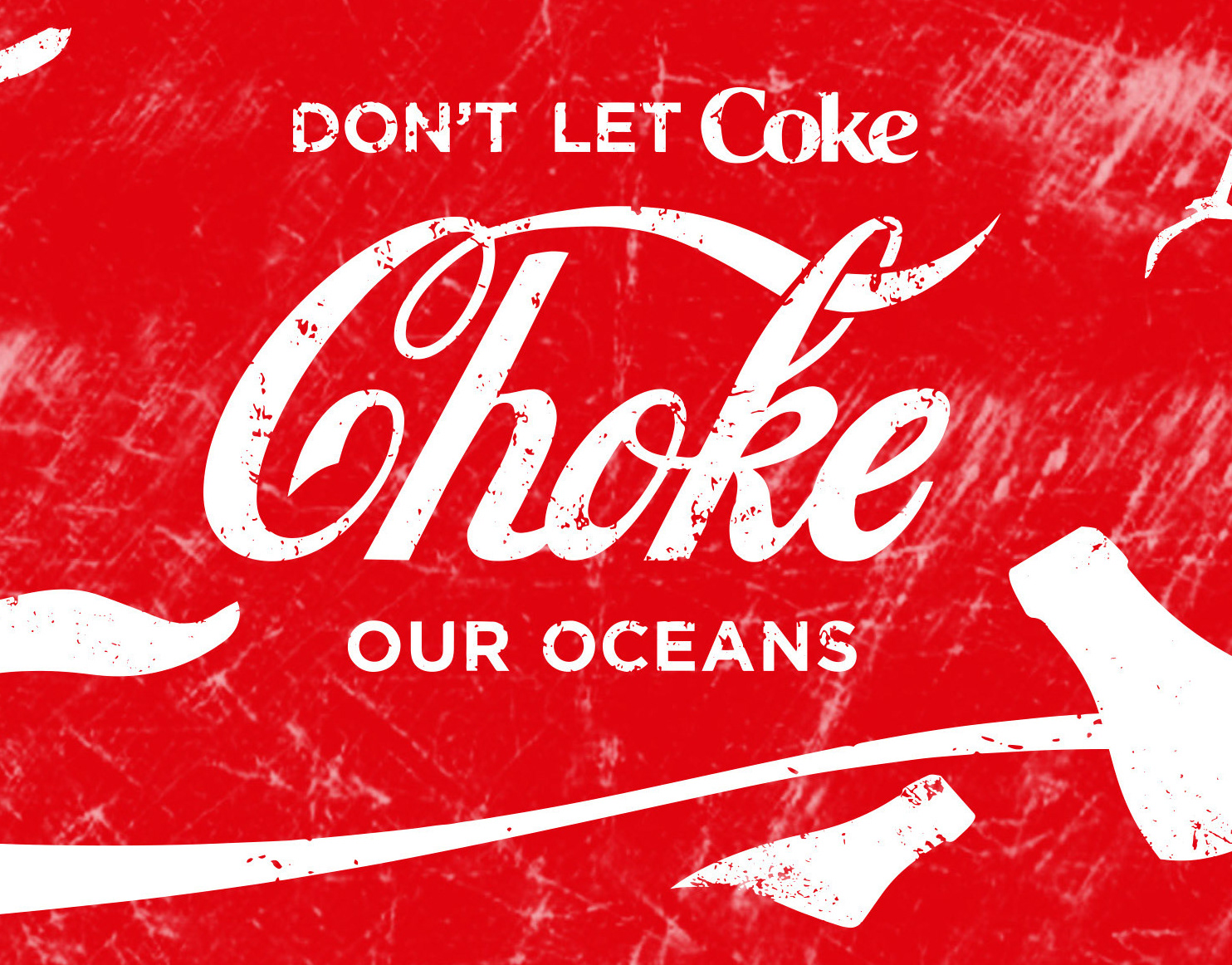Campaign identity: End Ocean Plastics
Design: Lovers | Creative direction: Marcela Terán, Greenpeace UK
We worked with the creative agency Lovers to produce a style guide for our End Oceans Plastics campaign. We needed a visual identity, including a suite of flexible assets, that would engage and inspire current and potential supports across a multi-year campaign, including print, social and live interventions. We needed to clearly communicate the glaring urgency of the ocean plastic problem and spur supporters to take action. We also wanted to highlight the importance of holding corporations and governments to account, rather than putting the blame on individuals.
The toolkit they created for us included a typeface, imagery, textures and colour scheme.
Paul Kelly from Lovers conducted research by inspecting the Thames Estuary, where he collected rubbish that would later inspire his visual design for this campaign.
He describes how they took a clean typeface and distressed it too look like it would on a partially eroded and crumpled plastic bottle dumped in the sea.
The branding therefore aims to reflect what brands look like “when you hoik them out of the sea, all salty and knackered”. He describes how they took a clean typeface and distressed it to look like it would on a partially eroded and crumpled plastic bottle dumped in the sea.
The style guide has been applied and used widely in many activities and output produced for the Greenpeace Plastics campaign, including materials for an expedition we conducted around Scotland documenting the presence and impact of plastic pollution; events; outreach activities; and much more
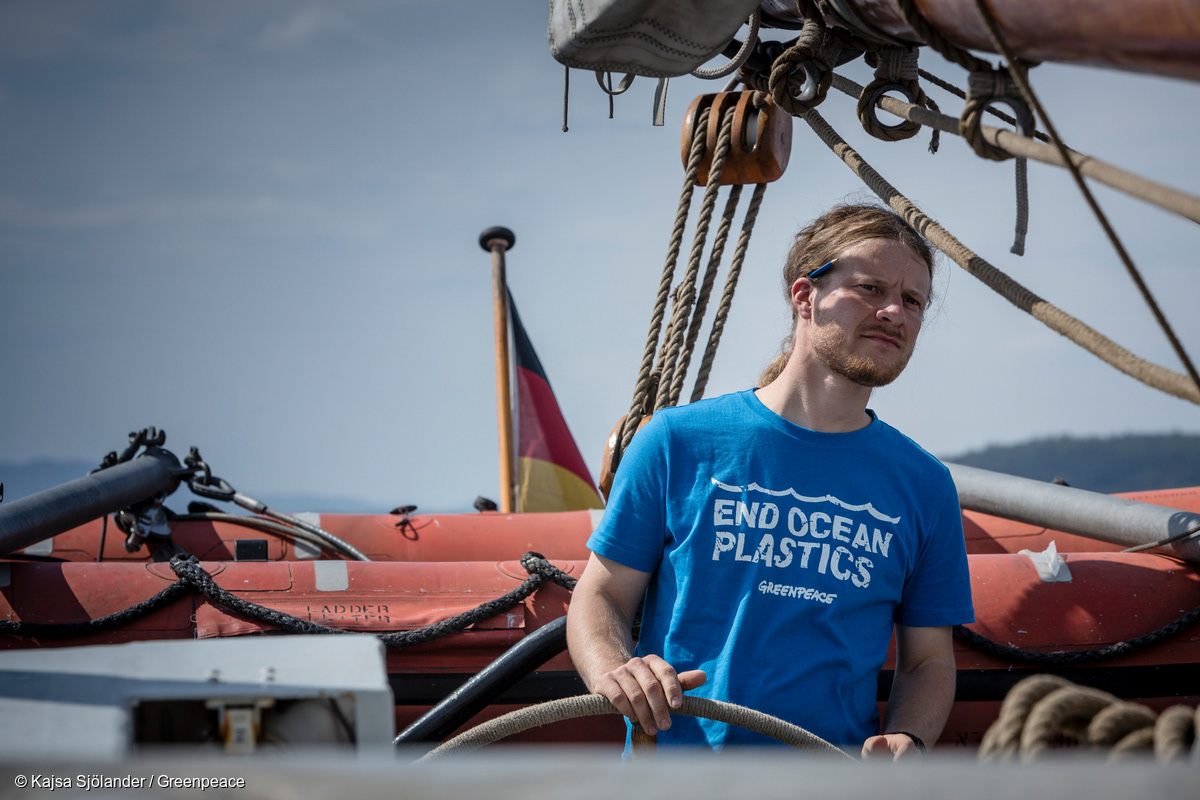
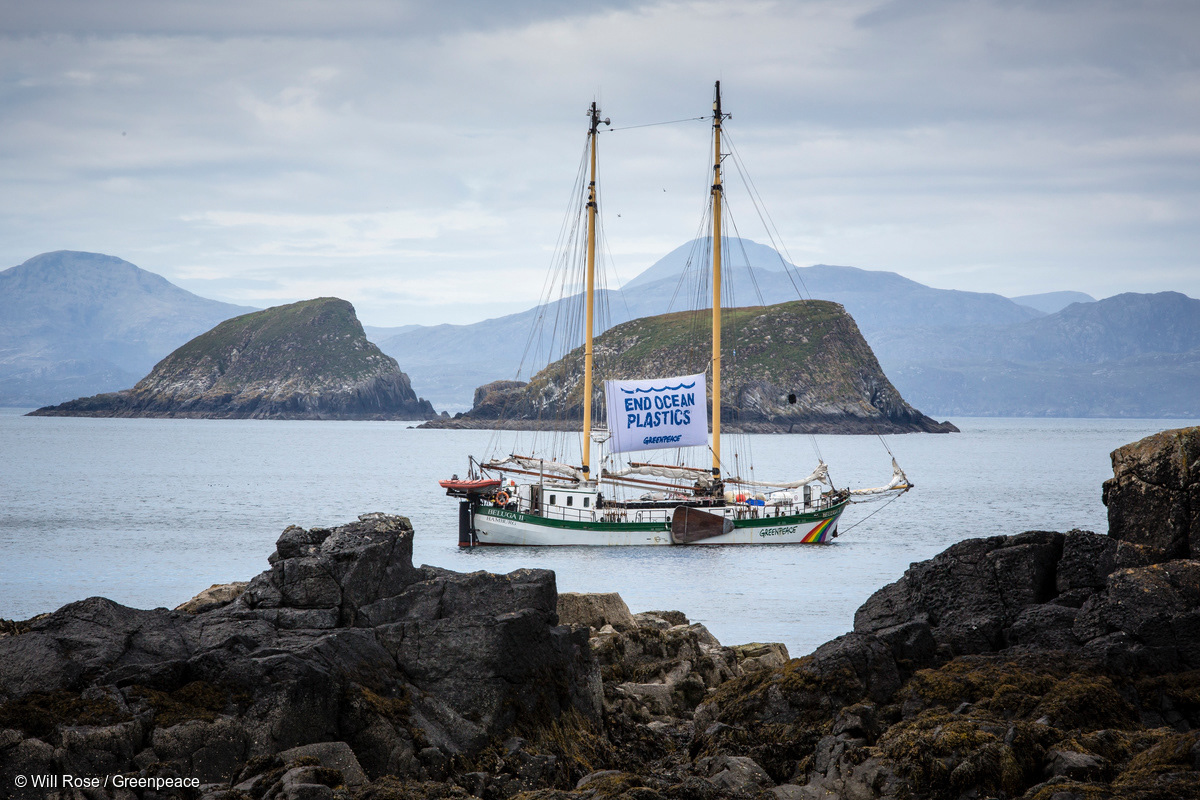
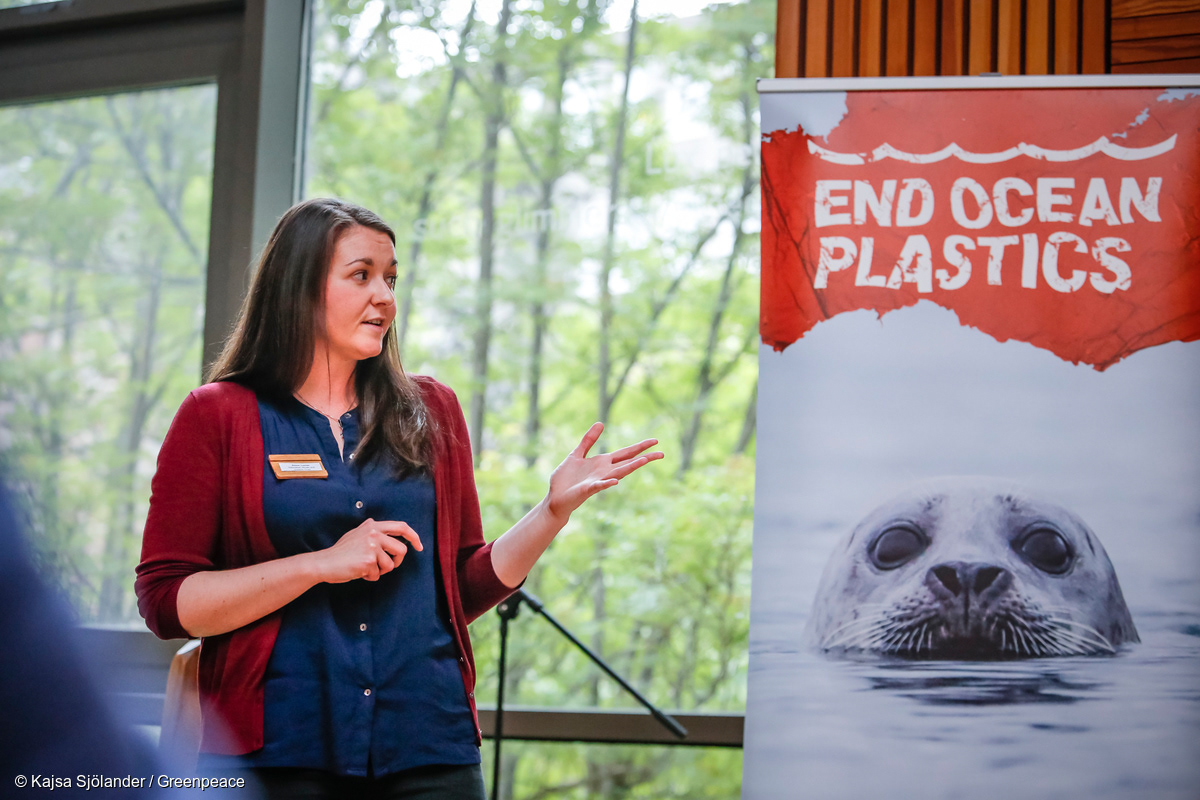



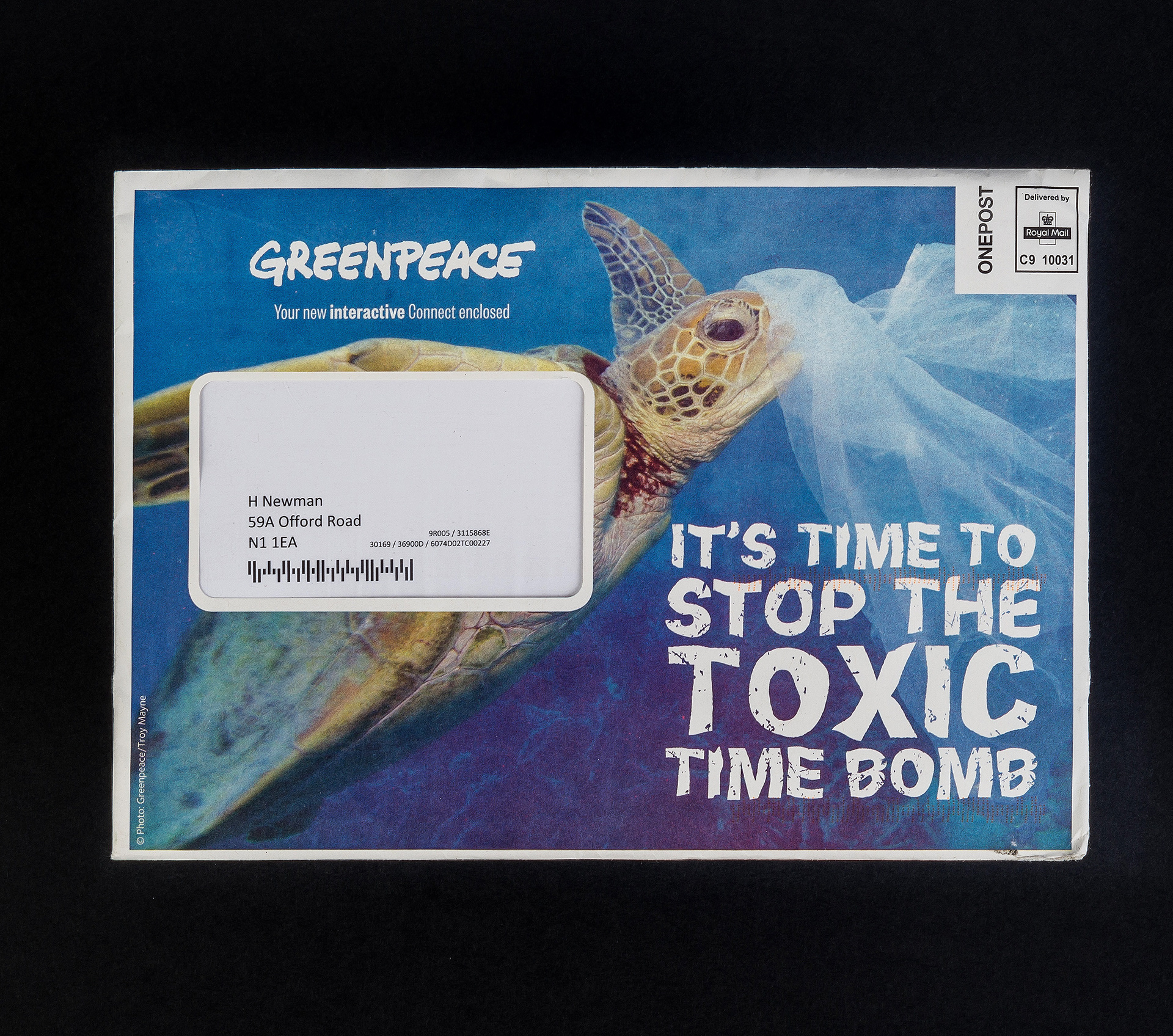

This year, Greenpeace took action to highlight supermarkets’ plastic packaging problem. Up and down the country, local Greenpeace groups visited supermarkets and replaced the plastic fruit and vegetable bags with FSC certified paper ones – which had the added bonus of explaining the campaign for anyone who picked one up. They also re-labelled the shelves of overly-packaged fruit and veg to highlight the problem. A few months later, we encouraged customers to give their plastic packaging back at the till with a card urging supermarkets to ditch pointless plastic.




